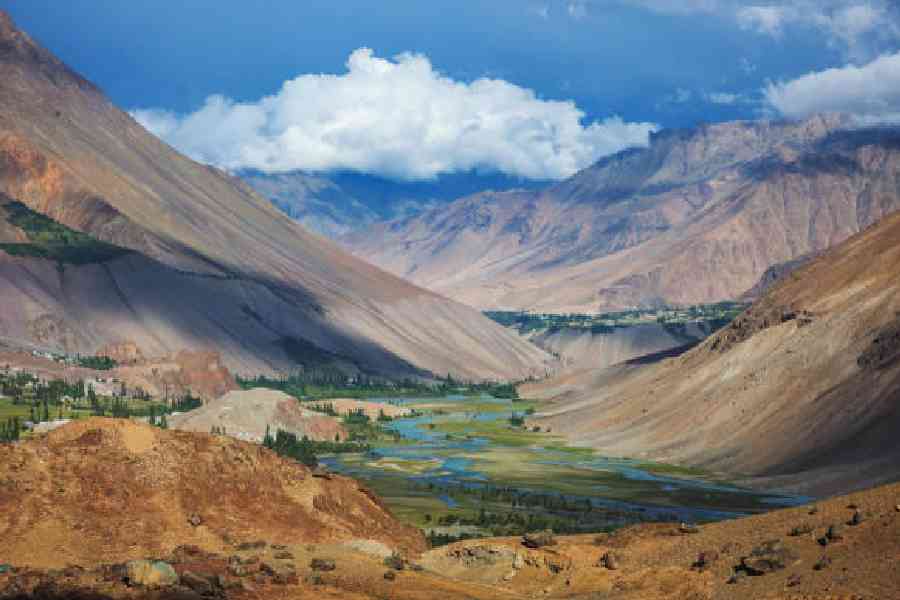Jayanta Bandyopadhyay (in pic) is a former professor of the Indian Institute of Management, Calcutta. He was earlier a researcher and an analyst at the International Centre for Integrated Mountain Development, Kathmandu, an intergovernmental institution working towards a climate resilient Hindu Kush Himalaya. Currently, he is a visiting distinguished fellow at the Observer Research Foundation (ORF), an independent global think-tank based in New Delhi. He has authored several books, research papers and monographs, including ORF’s Governing the Water Tower of Asia: The Case for a System of Integrated Knowledge for the Hindu Kush Himalaya. He spoke to Prasun Chaudhuri at length on the future of water security in Asia. Excerpts:
q Why is the Hindu Kush Himalaya (HKH) called the Water Tower of Asia?
Because the HKH mountain range that spans eight countries and stretches 3,500 kilometres across Asia is the source of 10 large rivers of Asia and serves the water needs of 16 countries.
q And, why is it known as the Third Pole?
That is because it has the third largest amount of snow and ice after the two poles, the North and South. According to some estimates, the Third Pole holds more than 1,00,000 square kilometres of glacier. For the sheer size of the range, including the Tibet Plateau, its water output serves livelihood needs of about 2.2 billion people in Asia, including much of China, India, Southeast Asia, Pakistan and Central Asia upto the Aral Sea. The perennial flows of the rivers originating here — the Ganges, the Brahmaputra, the Indus, the Yellow River and the Yangtze — are vital for the food, water and energy security of about a third of the world’s population, and is a habitat for countless irreplaceable species.

q What are the key environmental and socio-economic challenges faced by the HKH today?
It is an acutely fragile landscape and absolutely frontline to the impacts of the triple planetary crisis of climate change, land instability and biodiversity loss. The effect of global warming affects the higher areas, causing rapid shrinking of glaciers.
The water in the HKH is fed by the summer monsoon and the winter Westerlies. High flows during the monsoon cause floods and drought in winter or early summer. Water scarcity in the densely populated northern China, northern India, Vietnam, Bangladesh, etc. leads to conflicts between areas in the upstream and downstream of the rivers. Furthermore, since most rivers cross transnational boundaries, there are steep challenges in governance of the rivers by the respective countries. For instance, while the Yellow River, the Ganges and the Indus water managers must address water scarcity in their delta regions, the Yangtze and the Brahmaputra face severe floods after extreme monsoons and high rates of erosion and sedimentation. The Yangstze and Ganges also face growing industrial demands for water as well as river pollution.
q You’ve mentioned in the monograph that the respective governments in the region have failed to meet the challenges because of their “reductionist approach” of engineering. Could you elaborate?
Most of the governments or river water managers ignore the fact that nature organises itself in a systematic and integrated manner... Reductionist approaches are planned without any concern for long-run costs to livelihood and the ecosystem. Projects for the augmentation of water supply, hydropower installations and other impoundments involving disproportionate benefit-sharing from shared watercourses, and prevention of inundation in the floodplains through the construction of embankments —have all resulted from a myopic and hegemonic vision of development.
A river basin needs an interdisciplinary knowledge system for effective and sustainable governance. Informal knowledge of traditional social institutions, such as paani panchayats in India and Nepal, must be integrated with modern scientific insights, such as the chemical composition of the flowing water (energy, biodiversity and sediments) in the framework of governance. Single-minded pursuit of economic growth must not push informal local economies to the margin...
q You’ve proposed a system of integrated knowledge of governance to meet the challenges. How will this work, say, in the case of the basin of the Ganges, one of the rivers originating in the HKH?
The Ganges has been engineered for a long time, especially under the East India Company... The complexity has been enhanced by the formation of parts of the new-nation state of Pakistan. In addition, Nepal has an ambitious plan for hydropower generation. Such interventions are guided by traditional reductionist engineering. Hence, the need for the creation of integrated knowledge.
q How will it be possible to protect the HKH at a time when increasing global warming and spells of heatwave are leading to glacial melt at an alarming rate in the Himalayas?
The challenge has become more acute as global warming is dictating water flow of the river systems due to extreme weather events, leading to flood and drought. To control global warming, we have to limit the emission of greenhouse gases, such as carbon dioxide. The three poles are all melting rapidly and they will continue in that path, if humans fail to control global warming.











